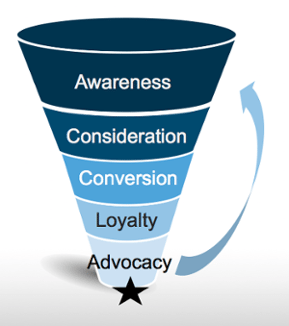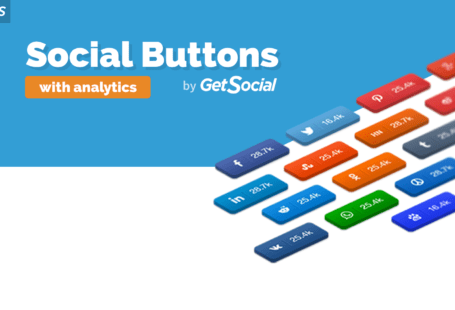In this series of blog posts, I’ll examine the eCommerce conversion funnel from Awareness to Advocacy and show you how to use social media & analytics to increase sales. I’ll briefly compare a brick-and-mortar store to an online store and then give tips and tools to help you improve your site each step of the way.
Note that I won’t be discussing paid advertising or SEO, but rather content that encourages user engagement.
The Five Steps of the Purchasing Funnel:

In today’s post, we’ll discuss the first step, Awareness.
Awareness:
Brick-and-Mortar : Customer walks by store
Online : Customer sees content related to your store from friends on social media
How to optimize this? Test, analyze data, repeat.
1) What to post?
Hint, hint, it’s not your advertisements. Talking about your products straight away is like being a door-to-door salesman. At this early stage, potential customers aren’t ready to buy and don’t want to be overwhelmed by product information. Doing this will merely push people away.
Instead, you need to develop a relationship with potential customers. Share content that people want to see and they’ll be more interested in your store, increasing your sales funnel eventually. Remember, this is a marathon, not a sprint. Post images, articles, and other content that is related to your store or the services that you offer. Your audience wants to learn something or be entertained. They don’t want to listen to your sales pitch. Make sure that your content is related to your product, but it shouldn’t be the product itself.
Share content that people want to see… not your advertisements
Take a step back. Make your content about, for, and even contributed by your audience. For example, crowdsource pictures posted on Instagram. Have your audience share their photos and then repost them. One general rule of thumb is the “5–3–2” rule which is how many pieces of original content, reposts, and promotional pieces you should share. The bottom line here is that few of your posts, 20% or so, can be promotional, but even these must be discrete. Start with none at first and then build up.
Then, A/B test your images, title, and copy to see what works: what your audience shares and what brings in more site visits and pageviews to your store. If you have WordPress, give Title Experiments Free plugin a try.
Lastly, don’t post the same content on all of your social media. Imagine receiving the same email 4 times. Wouldn’t that be annoying? Develop specific content for each network.
2) Where to post?
To decide where to post, you should know your customer base. Know where your audience is most active and evaluate the channel itself to make sure that your brand belongs there. For example, according to Business Insider, 84% of 18 to 29 year olds have a Facebook account, while only 45% of those 65 and over have one.
Post where your audience is most active, but don’t spread yourself too thin.
But, don’t spread yourself too thin. Pick 3 or 4 social networks where your users are most active and stick to those. Go ahead and register for an account under your company’s name in the other networks, in case you want to use it later on. In general, a safe bet is going with Facebook, Twitter, and either Pinterest, Google +, or both.
3) When and how often to post?
This question really depends on several factors including on which social network you are publishing, where your audience is (geography), and the content that’s being published.
Facebook engagement is highest on Fridays and Saturdays in North America and users are sharing, liking, and commenting mostly between 8am and 8pm with peaks before and after working hours. But, this could be different for your specific audience in your country. Test at varying times during the day, keeping the day of the week constant, to see which posts receive the most interactions. Post on Facebook no more than once or twice per day.
Twitter is a bit different as the posts don’t last as long in the news feed. Post on Twitter several times per day, even up to 10 times, just to reach your audience. But be sure to strike a balance between informing your audience and annoying them. A good tool for measuring when the best time to Tweet is SocialBro, which also offers audience insights and competitor analysis.
LinkedIn shares should be no more than once per day and rarely on weekends.
Summary:
If there’s one thing you should get out of this post it is this:
Share content that is related to your products (but not your products themselves!) and that your specific audience finds interesting, useful, or otherwise wants to see. Timing, placement, and everything else is just testing. Follow the numbers.
How do you bring your customers into the buying decision funnel?
Interested in knowing more about Dark Social & Analytics?
[su_button url="https://getsocial.io" target="_blank" style="flat" background="#21D2B5" color="#ffffff" size="7" wide="no" center="yes" radius="auto" icon="" icon_color="#FFFFFF" text_shadow="none" desc="" onclick="" rel="" title="" id="" class=""]SIGN UP FOR FREE[/su_button]





